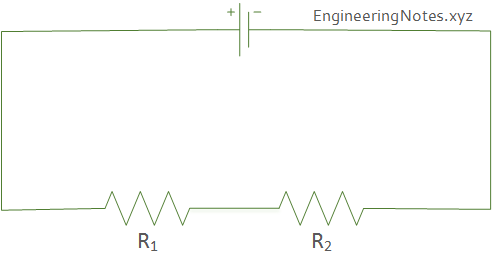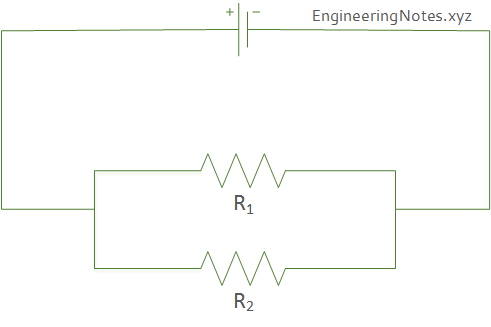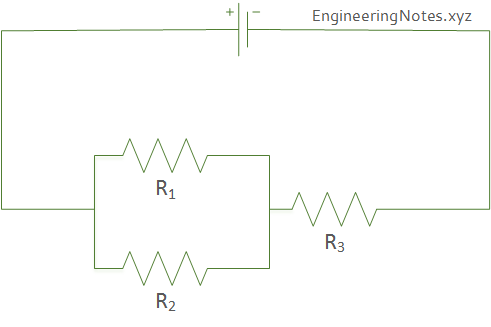Resistors may be used to represent various electrical components used in practice. One such example is a light bulb that behaves like a resistor. It is therefore important to understand how current and voltages vary when resistors are in series or in parallel.
Resistors in Series
Resistors are combined in series as shown in Figure 1.
The formula for calculating the effective resistance \(R_{eff}\) is
\(R_{eff} = R_1 + R_2 \)
The above diagram can then be simplified with only one resistor with resistance \(R_{eff}\) instead of two.
For a circuit with more than two resistors in series, the same addition principle applies. Say the circuit has n resistors, effective resistance becomes
\(R_{eff} = R_1 + R_2 + R_3 + \dots + R_n \)
Resistors in Parallel
Resistors can also be combined in parallel circuits as shown in Figure 2.
The effective resistance \(R_{eff}\) is given by
\(\large{\frac{1}{R_{eff}} = \frac{1}{R_1} + \frac{1}{R_2}}\)
The above equation is can be rewritten as
\(R_{eff} = \frac{R_1 R_2}{R_1 + R_2}\)
In the case of circuits with more than two resistors, the general equation is
\(\large{\frac{1}{R_{eff}} = \frac{1}{R_1} + \frac{1}{R_2} + \frac{1}{R_3} + \ldots + \frac{1}{R_n}}\)
Example
Consider the circuit shown in Figure 3 below.
Resistors \(R_1\) and \(R_2\) are in parallel and can be combined using the above equation
\(R_{1,2} = \frac{R_1 R_2}{R_1 + R_2}\)
Next, the overall effective resistance can be found by combining \(R_{1,2}\) with \(R_3\). Since they are in series, the resistances are added.
\(R_{eff} = R_{1,2} + R_3 \)


